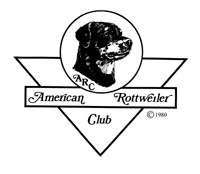HEALTH OVERVIEW
The following health conditions have been identified in the Rottweiler. Items marked with an asterisk note an available health screening test for the condition.
-
- Cancers (osteosarcoma, lymphoma, hemangiosarcoma, squamous cell carcinoma, melanoma and others)
- Hip Dysplasia (HD)*
- Elbow Dysplasia (ED)*
- Cataracts*
- Entropion
- Ectropion
- Epilepsy
- Sub Aortic Stenosis (SAS)*
- Protein Losing Enteropathy
- Juvenile Laryngeal Paralysis & Polyneuropathy (JLPP) (also known as POANV Polyneuropathy with Ocular Abnormalities and Neuronal Vacuolation)*
- Neuroaxonal Dystrophy (NAD)*
-
Leukoencephalomyelopathy (LEMP)*
-
Degenerative Myelopathy (DM)*
-
X-linked Myotubular Myopathy (XLMTM) in Rottweilers*
*health screening test available for the condition.
At a minimum, the following screenings and results are strongly recommended for any breeding pair and are required by American Rottweiler Club Mandatory Practices:
| Screening | Testing | Result |
|---|---|---|
| Hip Dysplasia | OFA Radiographic Hip Evaluation after 24 months of age | Excellent, Fair or Good rating |
| Elbow Dysplasia | OFA Radiographic Elbow Evaluation after 24 months of age | Normal or DJD1 rating. It is strongly recommended to breed Normal to Normal or DJD1 to a Normal. |
| ACVO Eye Exam | Eye Examination after 24 months of age and every three years (and within 3 years of any breeding) | Normal |
| Cardiac Evaluation | Cardiac Evaluation after 24 months of age. | Clear rating. It is strongly recommended that the cardiac evaluation be performed by a Board-Certified Cardiologist and strongly recommended that the certification be done by echocardiogram |
| Juvenile Laryngeal Paralysis & Polyneuropathy (JLPP) | DNA based test from an accepted lab. | Clear or Carrier. If Carrier, at least one parent must be JLPP clear by DNA testing or by parentage. |
| Canine Health Information Center (CHIC) number must be issued. | No specific test. This number is issued by the Orthopedic Foundation For Animals when all parent club-required tests have been performed, released for public review (whether pass or fail) and the Rottweiler is permanently identified (by microchip or tattoo) at the time of testing. |
